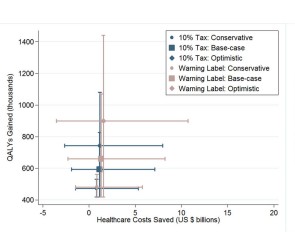Your cart is currently empty!
Cost Effectiveness of Nutrition Policies on Processed Meat: Implications for Cancer Burden in the U.S.
All your purchased models will be available under your account under “Dashboards”
Disease Area (Primary)
Colorectal and stomach cancer
First Developed
07/07/2017
Last Developed
01/14/2019
Software Used
R (e.g., heemod, BCEA, dampack, hesim)
Model Sponsor
Government agency
Intervention
nutrition_policy
Model Validation Score
– %
Coming Soon In Phase II: You will be able to pay a fee to download the CADTH Tool for your model which includes subaggregated scores.
Results
Over a lifetime, the 10% excise tax would prevent 77,000 colorectal (95% uncertainty interval=56,800, 107,000) and 12,500 stomach (95% uncertainty interval=6,880, 23,900) cancer cases, add 593,000 (95% uncertainty interval=419,000, 827,000) quality-adjusted life years, and generate net savings of $2.7 billion from societal perspectives. The warning label policy would avert 85,400 (95% uncertainty interval=56,600, 141,000) and 15,000 (95% uncertainty interval=6,860, 34,500) colorectal and stomach cancer cases and add 660,000 (95% uncertainty interval=418,000, 1,070,000) quality-adjusted life years with net savings of $4.5 billion from societal perspectives. In subgroup analyses, greater health and economic benefits accrued to (1) younger subpopulations, (2) subpopulations with greater cancer risk, and (3) those with higher baseline processed meat consumption.
Conclusion
What are the key conclusions or current applications of this model?
Source File(s)

